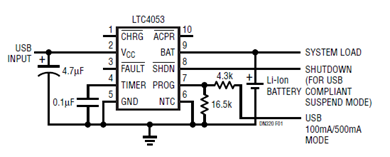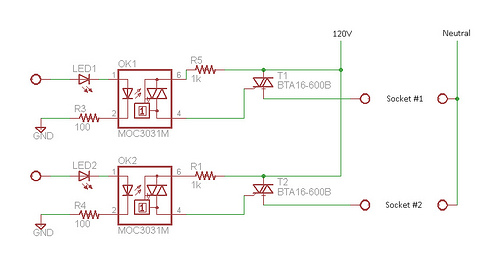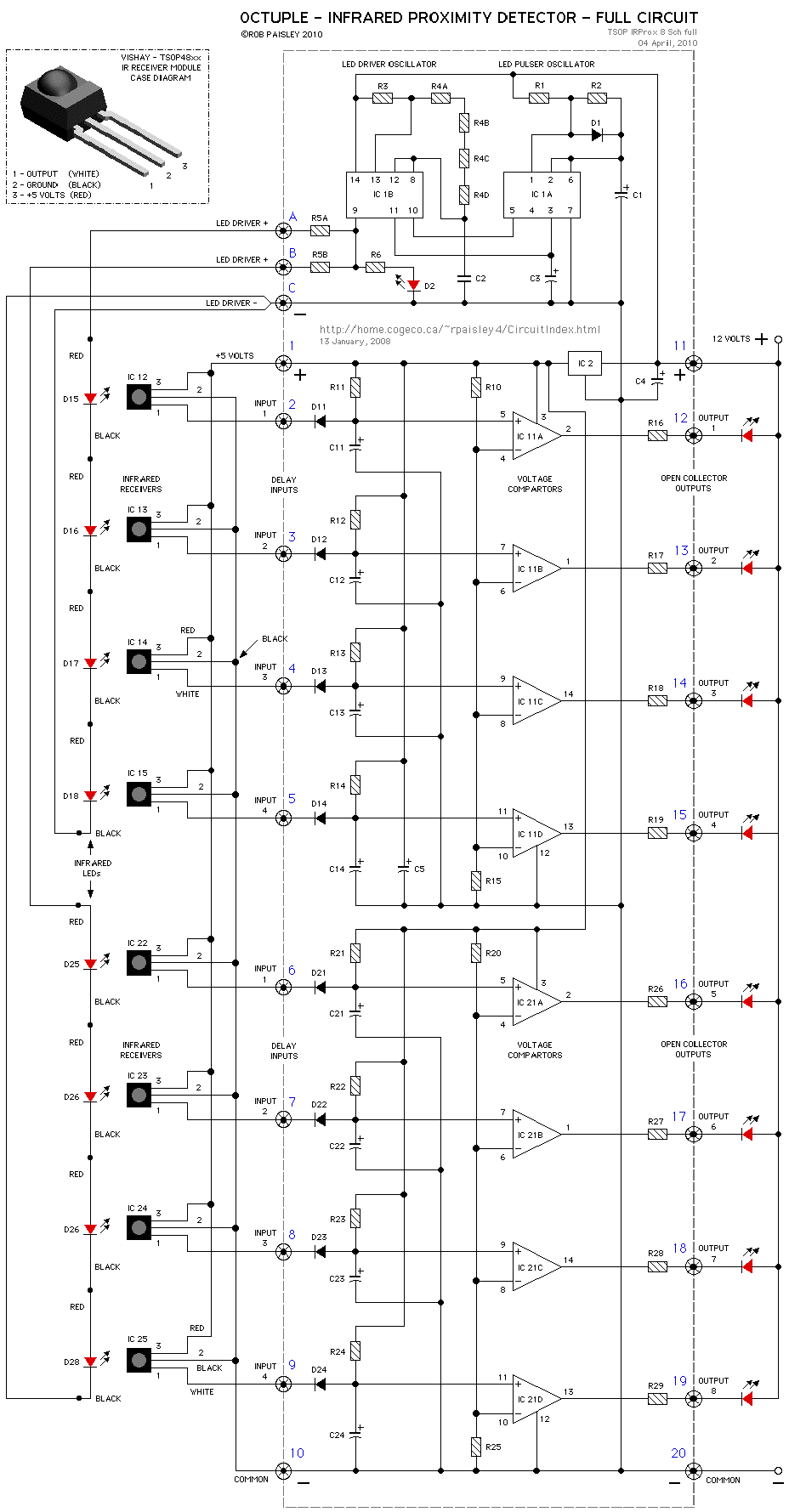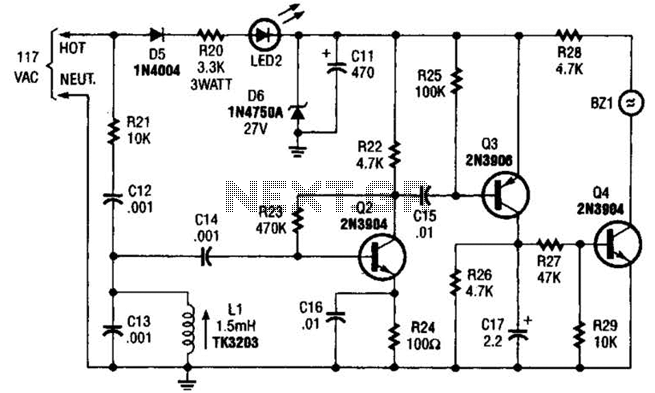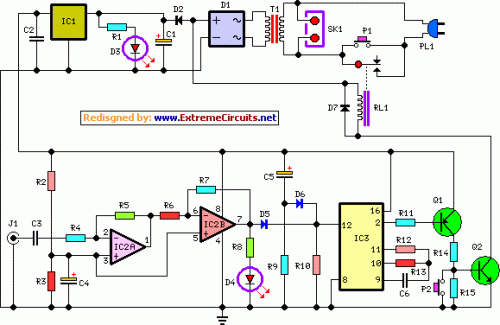
Cooker notification circuit
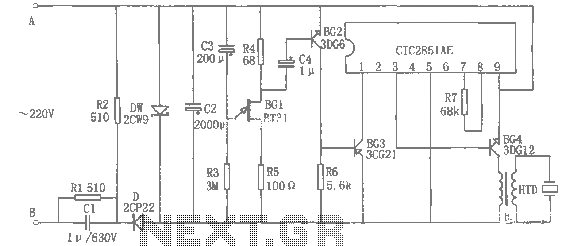
The rice cooker notification circuit operates as follows: When the rice cooker is in operation, both terminals A and B have a voltage of 0, meaning the entire circuit remains inactive. In the event that the rice cooker runs dry, the main switch will trip, allowing AC voltage to reach both terminals A and B, thereby activating the circuit. A buck power supply is utilized to create a delay of 10 minutes before the music IC CIC2851AE is activated. This integrated circuit then outputs an audio signal, which is amplified by the BG4 to drive the HTD, producing an audible notification to inform the user that the rice is cooked and the power should be unplugged.
The rice cooker notification circuit is designed to enhance user experience by providing an audible alert when the cooking process is completed. The circuit includes several key components: a master switch, which serves as a safety feature to prevent operation when the rice cooker is dry, and a buck converter that regulates the voltage to ensure that the subsequent components receive the appropriate power levels.
Upon activation, the circuit begins with both terminals A and B at 0 volts, indicating that the rice cooker is functioning correctly. Once the rice cooker has completed its cooking cycle, if it runs dry, the master switch trips, allowing AC voltage to flow through the circuit. This transition activates the buck converter, which steps down the voltage to a manageable level suitable for the delay circuit.
The delay circuit is crucial for providing a buffer period of 10 minutes, allowing for any potential residual cooking to finish. After this delay, the music IC CIC2851AE is powered on, which is responsible for generating the audio notification. The audio signal output from the CIC2851AE is then sent to the BG4 amplifier, which increases the signal strength to drive the HTD speaker. The HTD speaker emits a sound, alerting the user that the rice is ready.
This notification system not only enhances convenience but also serves as a reminder for users to unplug the rice cooker after use, promoting energy efficiency and safety. Overall, the rice cooker notification circuit is a well-designed solution that integrates various electronic components to create an effective alert system for cooking completion.Rice cooked rice cooker notification circuit works: When the rice cooker to work, A, B both ends voltage is 0, the entire circuit does not work. When the rice cooker boiled dry, the master switch trip, then A, B both ends to get AC voltage circuit to work. By Buck power, delay circuit delay 10 minutes after the music IC CIC2851AE to work, the audio signal output after BG4 amplified drive HTD audible. Thereby informing the owner of the rice is cooked, unplug the power outlet.
The rice cooker notification circuit is designed to enhance user experience by providing an audible alert when the cooking process is completed. The circuit includes several key components: a master switch, which serves as a safety feature to prevent operation when the rice cooker is dry, and a buck converter that regulates the voltage to ensure that the subsequent components receive the appropriate power levels.
Upon activation, the circuit begins with both terminals A and B at 0 volts, indicating that the rice cooker is functioning correctly. Once the rice cooker has completed its cooking cycle, if it runs dry, the master switch trips, allowing AC voltage to flow through the circuit. This transition activates the buck converter, which steps down the voltage to a manageable level suitable for the delay circuit.
The delay circuit is crucial for providing a buffer period of 10 minutes, allowing for any potential residual cooking to finish. After this delay, the music IC CIC2851AE is powered on, which is responsible for generating the audio notification. The audio signal output from the CIC2851AE is then sent to the BG4 amplifier, which increases the signal strength to drive the HTD speaker. The HTD speaker emits a sound, alerting the user that the rice is ready.
This notification system not only enhances convenience but also serves as a reminder for users to unplug the rice cooker after use, promoting energy efficiency and safety. Overall, the rice cooker notification circuit is a well-designed solution that integrates various electronic components to create an effective alert system for cooking completion.Rice cooked rice cooker notification circuit works: When the rice cooker to work, A, B both ends voltage is 0, the entire circuit does not work. When the rice cooker boiled dry, the master switch trip, then A, B both ends to get AC voltage circuit to work. By Buck power, delay circuit delay 10 minutes after the music IC CIC2851AE to work, the audio signal output after BG4 amplified drive HTD audible. Thereby informing the owner of the rice is cooked, unplug the power outlet.
